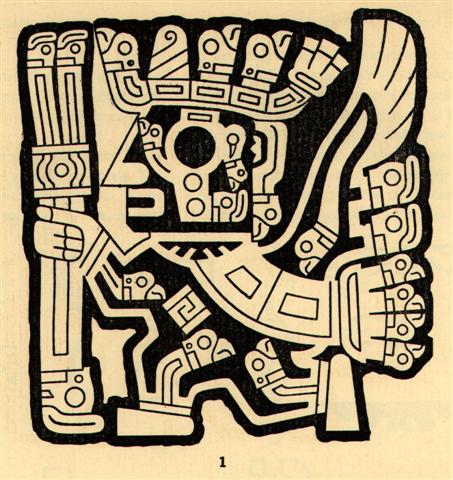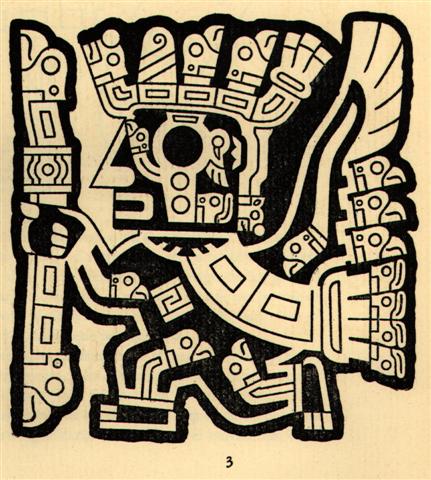|
Posnansky has
suggested that the triplet of 'day signs' incised on the Gateway of
the Sun indicates the originators used a 'week' with 5 days:
  
The order between the
days signs, which Posnansky has given with his numbers, should be
changed, though, because his number 2 (center above) is a special
case, where the 'crown' has a fish head in front, and where by cause
of the bird striving upwards (from the watery world of the fishes)
the 'crown' has dipped down to become invisible from above. Also the
arms, legs, and wings of this bird have fish signs.
Therefore Posnansky's
day sign number 2 should denote the beginning and be placed as
number 1 in the triplet. From 'the kingdom of the fishes' evolution
will result in creatures on land and in the air. They were not
stupid, those who built the Gateway of the Sun, they could read the signs of mother nature.
Posnansky's number 3
corresponds to side a on G and H, and number 1 to side b (excepting
the last 58 days which belong to number 2).
I do not suggest that
Posnansky was wrong in identifying these 'day signs' with 5-day
weeks (if that is what he meant, I cannot rely 100% on my memory).
Instead I endorse his idea of a 5-day week. There will be 72 such in
a year with 360 days, and - we should remember - there are 400 + 72
= 472 days in the text of G.
The 7-day week is
connected with the cycle of the moon. They counted with fortnights,
not with 7 nights, as the basic time unit. A pair of weeks is a
fortnight and a pair of fortnights is the length of a month,
defined by the number of nights moon could be shining in a row. 2 *
14 = 28.
Measured by the cycle
of the sun the basic time unit was not 14 but 15, because 2 * 15 =
30. An ordered 360-day year is equal to 24 * 15 days (which probably explains why
we still have the idea that a day is equal to 24 hours).
The sun cycle has two
half-cycles, 12 * 15 = 180 days in each. We feel it necessary to divide
24 hours into two equal parts, and I suspect we measure a circle by using
its radius, not its diameter, because we wish to have a pair in the
formula 2 * r * π.
From these
considerations a week cannot be 7 days long, it must be a 5-day long week
(3 would be too short and 15 too long). With a 5-day week we
can count to a week by using the fingers on one hand. Fingers (rima)
will that way be associated with number 5 (rima).
Possibly the ideas
above can be applied when trying to interpret the triplet of
5-feathered ariki in G:
|










